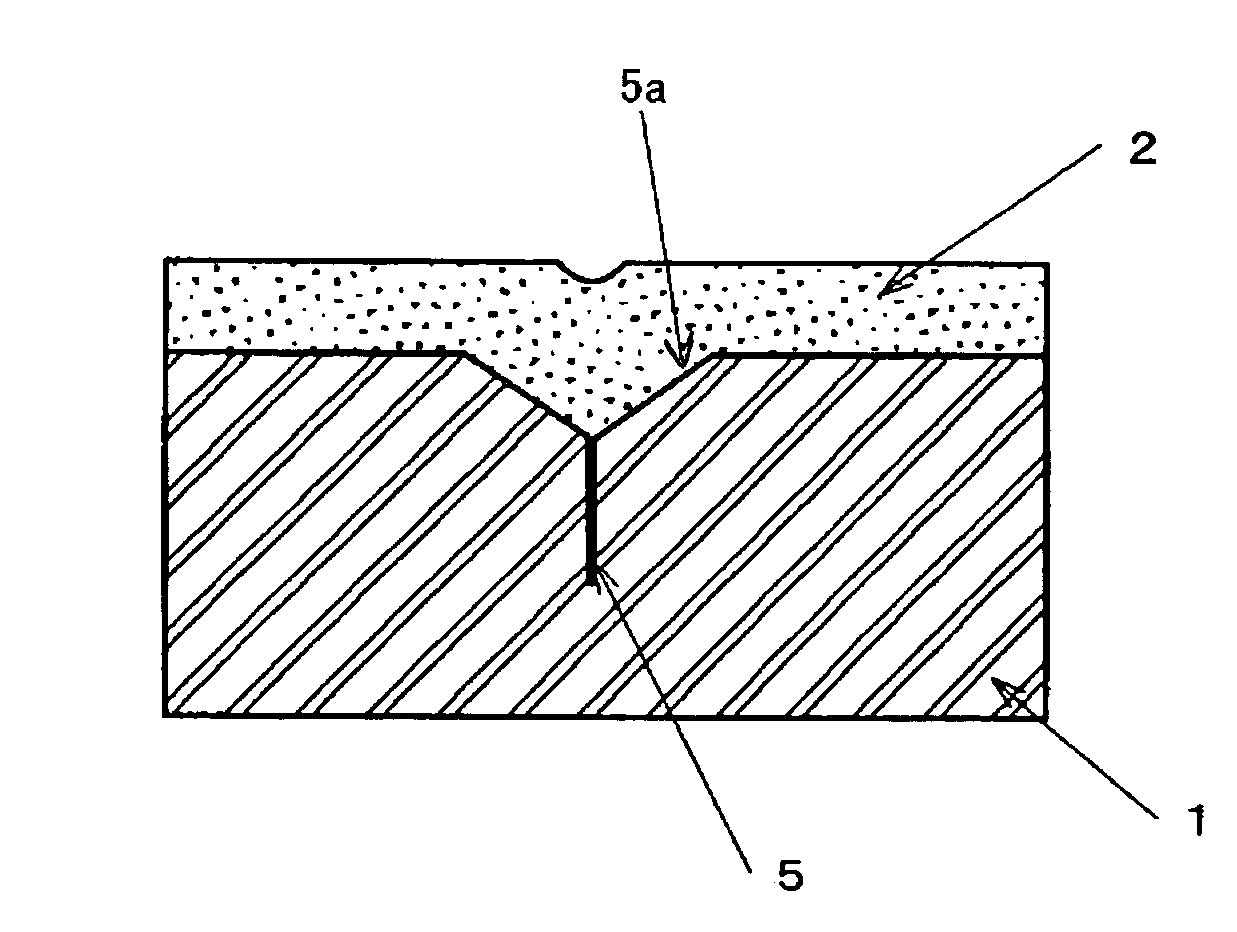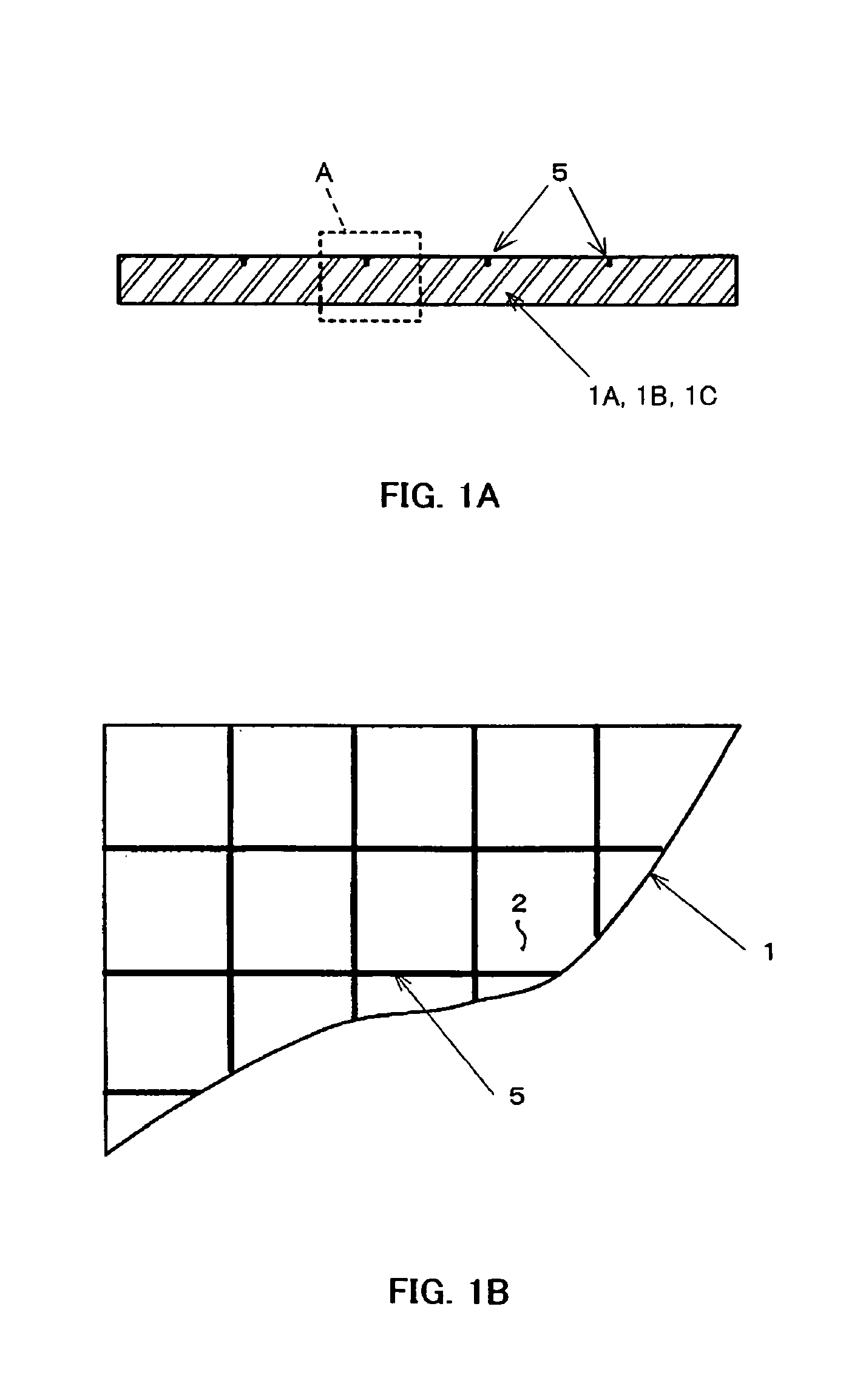Manufacturing method of optical devices
a manufacturing method and optical wafer technology, applied in the direction of manufacturing tools, camera filters, instruments, etc., can solve the problems of poor utilization efficiency of optical materials, difficult to split optical wafers, and high material costs, so as to suppress processing distortion, suppress processing distortion of optical wafers, and reduce material costs
- Summary
- Abstract
- Description
- Claims
- Application Information
AI Technical Summary
Benefits of technology
Problems solved by technology
Method used
Image
Examples
embodiments
[0028]A method of manufacturing an optical device (filter) in accordance with the present invention is shown in FIGS. 1A to 3, where FIG. 1A is a vertical section through an optical wafer, FIG. 1B is a plan view thereof, FIG. 2 is a partial expanded plan view of the portion within the dotted frame A in FIG. 1A, FIG. 3A is a vertical section through an optical wafer provided with an optical thin film, and FIG. 3B is a partial expanded view of the portion within the dotted frame B in FIG. 3A.
[0029]With this invention, the optical filter is formed of multiple layers of the three optical chips 1a, 1b, and 1c, each formed of an optical material with the infrared-cutting optical thin film 2 on both main surfaces thereof, as described above, bonded together by the adhesive 3 (see FIG. 5). With the present invention, the optical chip is basically formed by first, second, and third steps.
[0030]In the first step, hairline cracks (scribed grooves or scratched grooves) 5, which define the optic...
PUM
| Property | Measurement | Unit |
|---|---|---|
| pressure | aaaaa | aaaaa |
| chromatic aberration | aaaaa | aaaaa |
| width | aaaaa | aaaaa |
Abstract
Description
Claims
Application Information
 Login to View More
Login to View More - R&D
- Intellectual Property
- Life Sciences
- Materials
- Tech Scout
- Unparalleled Data Quality
- Higher Quality Content
- 60% Fewer Hallucinations
Browse by: Latest US Patents, China's latest patents, Technical Efficacy Thesaurus, Application Domain, Technology Topic, Popular Technical Reports.
© 2025 PatSnap. All rights reserved.Legal|Privacy policy|Modern Slavery Act Transparency Statement|Sitemap|About US| Contact US: help@patsnap.com



